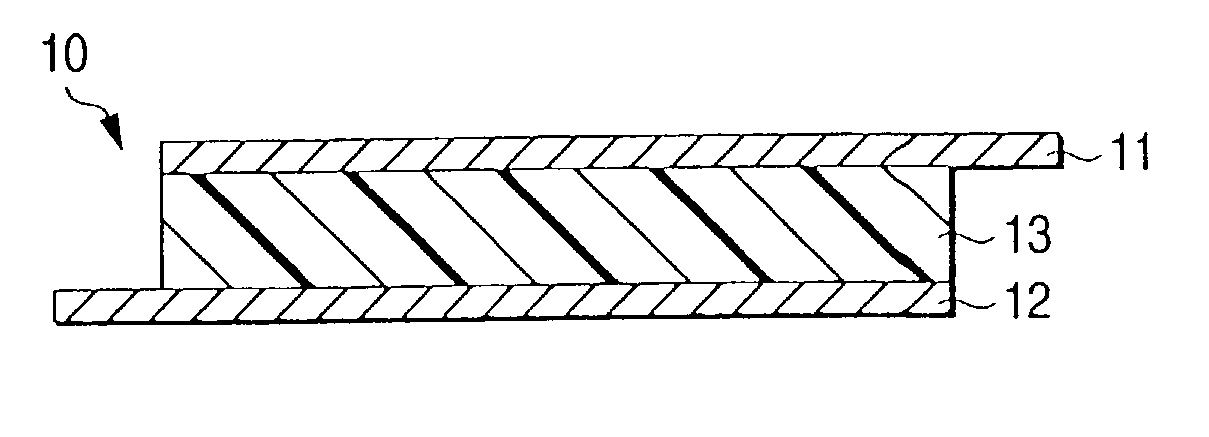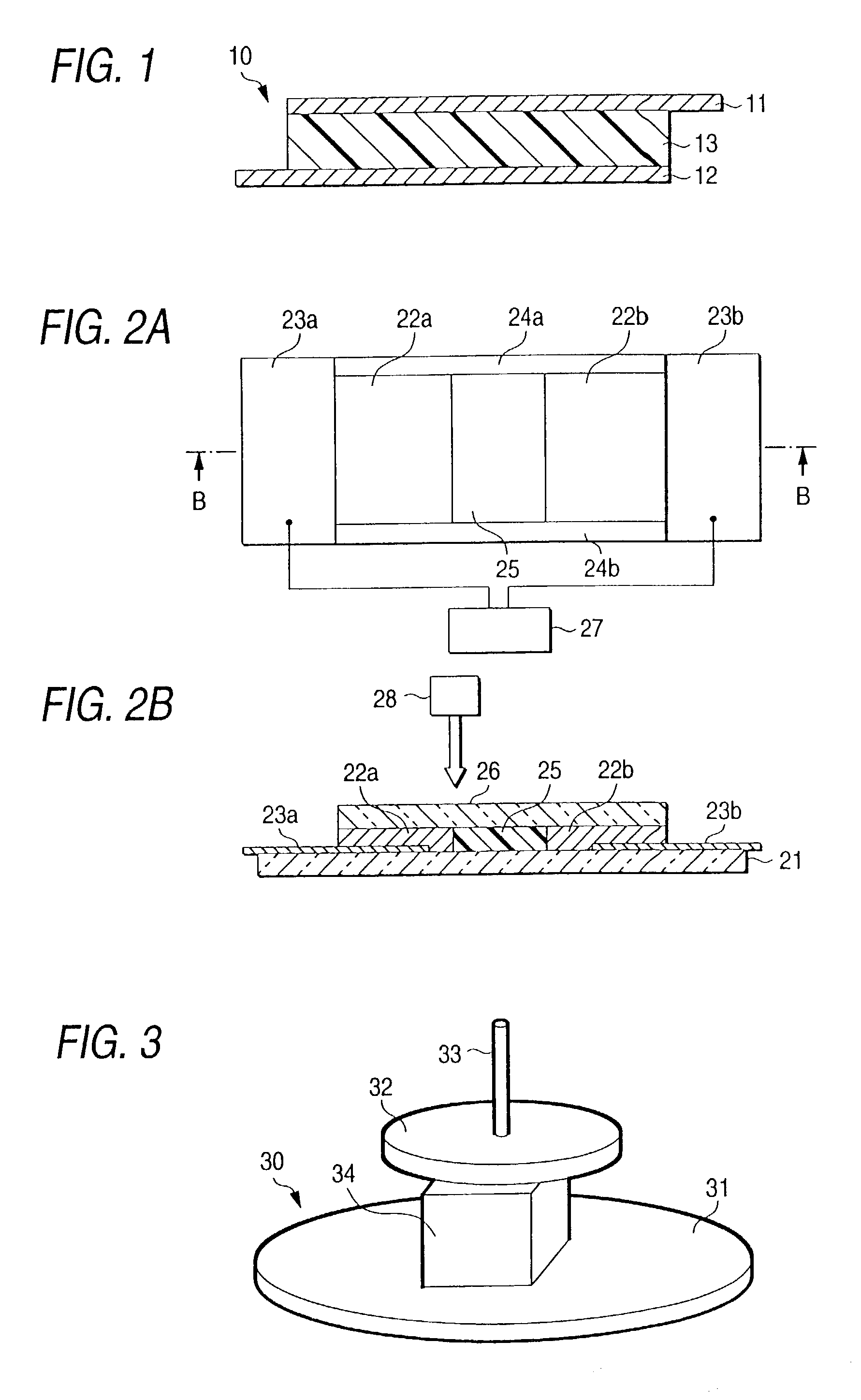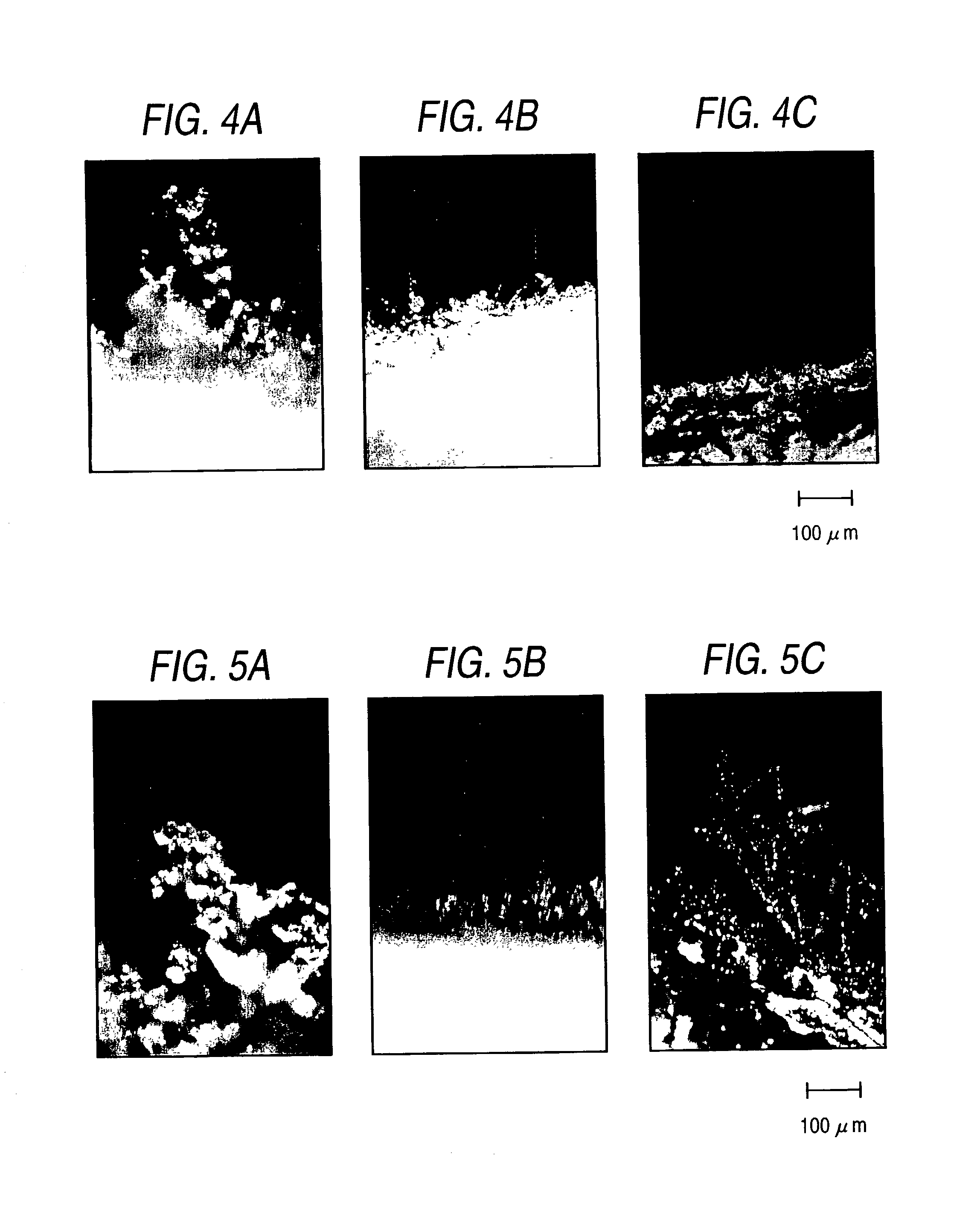Polymer electrolyte
a technology of polymer electrolyte and electrolyte, which is applied in the field of polymer electrolyte, can solve the problems of dendrite formation, temperature increase and pressure increase, and fire, and achieve the effects of reducing dendrite growth, excellent low-temperature characteristics, and sufficient mechanical strength
- Summary
- Abstract
- Description
- Claims
- Application Information
AI Technical Summary
Benefits of technology
Problems solved by technology
Method used
Image
Examples
example 1
[0090]A polymer gel component (1) and an electrolyte solution (2) were mixed in a prescribed weight ratio (3). A prescribed amount of a polymerization initiator (4) was further added in the resulting solution. The resulting mixture was put in a glass container in an amount that would give a prescribed film thickness and allowed to react at 80° C. for 6 hours to prepare a polymer electrolyte. All these operations were conducted in a dry argon atmosphere.
Composition of the Resulting Mixture:
(1) Polymer Gel Component
[0091]Methylmethacrylate (MMA)
[0092]Triethyleneglycoldimethacrylate (TEGDM) (“Blenmer PDE150” produced by Nippon Oil and Fats Co., Ltd.; molecular weight: 286.33)
[0093]MMA / TEGDM=99 / 1 by mole
(2) Electrolyte Solution
[0094]Nonaqueous solvent:[0095]Ethylenecarbonate (EC)[0096]Propylenecarbonate (PC)
[0097]Electrolyte: LiBF4
[0098]EC / PC / LiBF4=52 / 41 / 7 by mole
(3) (MMA+TEGDM) / Electrolyte Solution=10 / 90 by Weight
(4) Polymerization Initiator
[0099]α,α′-Azobisisobutyronitrile (AIBN)
[010...
example 2
[0106]A polymer electrolyte was prepared in the same manner as in Example 1, except for reducing the amount of TEGDM to 0.5 mol % based on the total monomers. The characterization of the resulting polymer gel was evaluated in the same manner as in Example 1-(2). The micrograph of the interface between the polymer electrolyte and the lithium negative electrode is shown in FIG. 4B, which reveals that dendrites had formed uniformly but were suppressed from growing.
example 3
[0107]A polymer electrolyte was prepared in the same manner as in Example 1, except for changing the weight ratio of the total monomers to the nonaqueous electrolyte solution to 17:83. The resulting polymer was found to have an ionic conductivity of 1.8×10−4 S / cm (25° C.) as measured in the same manner as in Example 1-(1). Further experiments were conducted to fill the gap between Example 1 and the above experiment. As a result, it was ascertained that the ionic conductivity drastically decreases with the weight ratio of the polymer gel in the polymer electrolyte increasing to about 15% or more.
PUM
| Property | Measurement | Unit |
|---|---|---|
| temperature | aaaaa | aaaaa |
| current density | aaaaa | aaaaa |
| current density | aaaaa | aaaaa |
Abstract
Description
Claims
Application Information
 Login to View More
Login to View More - R&D
- Intellectual Property
- Life Sciences
- Materials
- Tech Scout
- Unparalleled Data Quality
- Higher Quality Content
- 60% Fewer Hallucinations
Browse by: Latest US Patents, China's latest patents, Technical Efficacy Thesaurus, Application Domain, Technology Topic, Popular Technical Reports.
© 2025 PatSnap. All rights reserved.Legal|Privacy policy|Modern Slavery Act Transparency Statement|Sitemap|About US| Contact US: help@patsnap.com



